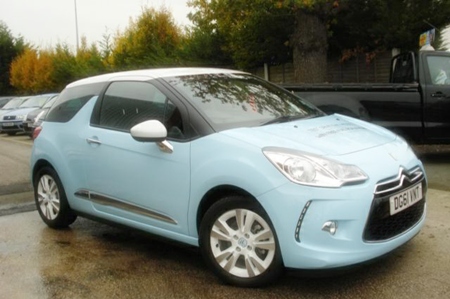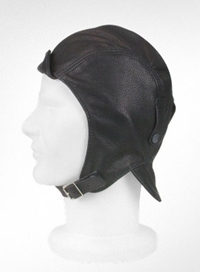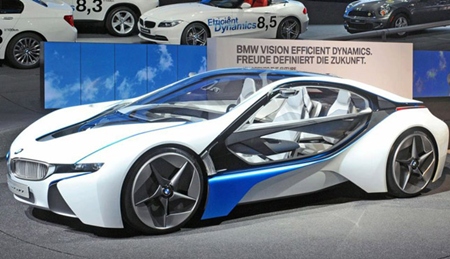 |
|
 |
| AUTO MANIA:
by Dr. Iain Corness |
|
|
|

Cars of 2011

Citroen DS3.
At this time of year there are always articles in the
motoring columns and motoring magazines as to the memorable cars of the
year. This is an almost impossible task. The exercise ends up as a true case
of apples and oranges, all fruit but totally different.
I may be well wide of the mark, but I honestly do not
believe that the general readership of a column like this one is looking at
purchasing vehicles over one million baht. With so many good cars between
500,000 and one million baht, why spend more?

Locally built Ford Fiesta.
The popularity of the Nissan March at an even lower price
for around 400,000 baht (count them on the road) also makes me say that the
popular price range is below 800,000 baht. For that money or less you can
have a new Corolla for your garage. Or a Mazda2 or a Ford Fiesta. Or a Vios,
or a Toyota Yaris, or would you rather spend 1.48 million baht on an
imported Citroen DS3 1.6 liters (when you can get two Yaris for less than
that)? Even the diesel Chevrolet Cruze is over the magic million, which goes
some way to explain why there are not more of these on the road. Fine cars -
but (relatively) expensive.
For me, if I’m pushed into a corner, the car of 2011 was
the new Ford Fiesta with the 1.6 liter engine, though the Mazda2 with the
1.5 runs a close second.
|
|
 |
If you’ve got a $10 head, wear a $10 helmet

Leather helmet.
“If you’ve got a $10 head, wear a $10 helmet” was a very
famous advertising catch phrase put forward by Bell Helmets in the 1960’s. It
really did get the message through, but it did not get through to SE Asia,
unfortunately, as can be seen by the 10 baht helmets worn by so many.
However, it is interesting to look at the history surrounding
the use of helmets, starting with motorcycle helmets, beginning with Lawrence of
Arabia who died from brain injuries in 1935 following a motorcycle accident.
One of the neurosurgeons who attended Lawrence was Australian
Dr. Hugh Cairns. In 1941, his first and most important article on the subject
was published in the British Medical Journal. He observed that 2279
motorcyclists and pillion passengers had been killed in road accidents during
the first 21 months of the war, and head injuries were by far the most common
cause of death. Most significantly, however, Cairns had only observed seven
cases of motorcyclists injured while wearing a crash helmet, all of which were
nonfatal injuries. His later 1946 article on crash helmets charted the monthly
totals of motorcyclist fatalities in the United Kingdom from 1939 to 1945. The
obvious decline in the number of fatalities took place after November 1941, when
crash helmets became compulsory for all army motorcyclists on duty. His article
concluded: “From these experiences there can be little doubt that adoption of a
crash helmet as standard wear by all civilian motorcyclists would result in
considerable saving of life, working time, and the time of hospitals.”
However, it was not until 1973, 32 years after his first
scientific article on the subject, were crash helmets made compulsory for all
motorcycle riders and pillion passengers in the United Kingdom. And many years
after that for the use of crash helmets to be legislated in Thailand (even
though they are still not universally worn).
Despite this, legislation alone is not enough. Helmets have
to be of a sufficient standard to give the protection needed. The plastic bucket
favored for motorcycle taxi passengers is worth very little as far as saving
lives is concerned. There needs to be a standard, and the US Snell Foundation is
one such organization.
The Snell foundation is an independent non-profit helmet
testing lab. William “Pete” Snell was an amateur road racer who died of head
injuries in an auto crash in 1956. He was wearing a leather helmet at the time.
The Snell Foundation was founded and funded in 1957 by friends and family of
Pete Snell. The lab was originally directed by Dr. George Snively, a medical
doctor, engineer, and amateur road racer who started driving standards for
helmet development in the 1970’s.
So how long do today’s expensive helmets last? Returning to
the Snell Foundation, their recommendations are that you should replace your
helmet every two years if you race, and every five years regardless. Helmets
significantly more than five years old should be destroyed. The components in
the helmets that protect you tend to deteriorate with time. Oils in your hair
eventually break down the helmet liner.
Selection of a good helmet is a matter of first checking to
see if it is certified by Snell, or British Standard, or DOT. After that, choose
the one that fits your head, we are not all of the same size! The helmet should
be a bit snug when brand new, as it will pack down a little bit to fit your
head.
We have come a long way since the leather helmets worn by
drivers such as Prince Bira and Juan Manuel Fangio in their heyday, and it has
been the advances in technology that have made today’s helmets as good as they
are.
|

|
Bathurst - Australia’s automotive Melbourne Cup

Customline in Sydney on the way to
Bathurst.
The UK has its Grand National, the US has the Super Bowl and
the Kentucky Derby and Australia has the Melbourne Cup. These countries stop for
those national events, which take precedence over anything else, be that work or
play. It may as well be a national holiday.
However, in the great sunburned land Down Under there is
another national event and it is just known as “Bathurst”, but spoken with a
reverence, as it is the Super Bowl of auto racing in Australia.
The Bathurst race began as a 500 mile event in 1960, but
these days, with metrification, is now 1,000 km around the longest and most
demanding circuit in Australia, which for almost 12 months is public roads, but
closed for the weekend in October. For Australian motor racing enthusiasts
today, Bathurst is the Holy Grail.
But way back in the early 60’s was my first sojourn the
Bathurst mountain. There were only two major problems, firstly I was a starving
medical student at that time and had no money, and secondly the only car I had
was a very tired 1949 MGTC, which certainly would not make the 1000 km trip to
Bathurst, let alone get home again. But I wanted to go, so I hatched a plan.
I knew of a 1953 Ford Customline for sale for 50 Aussie
pounds. A bit run down, in need of some tyres, but it was cheap enough. Les, one
of my friends worked for a tyre company, said he would supply the tyres if he
could have a free ride with us. Mind you, it was a trifle worrying that he
insisted we bring the Customline around after hours with the lights off.
Now I could see that fuel was going to be our next problem.
But Customlines were huge and would easily take six people, so Les and I began
looking for four financially secure souls, who would bear the cost of the fuel
there and back.
As “Bathurst” was on everyone’s lips, it turned out fairly
easy to get the four financials and after work on Friday night, the Customline
headed towards Bathurst via Sydney from our home in Brisbane.
The weather did not smile on us as we came to the first
mountain range and it was necessary to turn on the windscreen wipers. It was
then we discovered a slight design fault in 1953 Ford Customlines. They had a
vacuum operated system for the wipers. When on a trailing throttle the vacuum
was at its maximum and the wipers would go ten to the dozen, but when you
depressed the accelerator the vacuum would decrease and wipers would just sit
there, stuck to the screen. Remember them?
Any uphill gradient was done by keeping the throttle on until
you could no longer see through the screen, and then lifting the foot to get a
couple of swish-swishes and planting the foot again. Hazardous at best,
downright dangerous at worst.
We got there, saw the races and left on the Sunday afternoon
for the 1000 km drive back, as we all had to be at work Monday morning. Powering
through the night, taking turns at the wheel and we made it. One of the great
adventures that a young lad could have, and still fun on which to reminisce.
|

|
Mission Impossible

Mission Impossible.
If you are wondering just what was the car driven by Tom
Cruise (in his role as Ethan Hunt) in the latest Mission Impossible movie, it
was a BMW i8 Concept which was unveiled at the 2011 Frankfurt Motor Show.
Specifications include a 7.2 kWh lithium-ion battery pack
that allows an all-electric range of 35 km. Its top speed is electronically
limited to 250 km/h (160 mph) and is expected to go from 0 to 100 kph in 4.6
seconds. Under normal driving conditions the i8 is expected to deliver 80 mpg-US
(2.9 L/100 km). A full charge of the battery will take less than 2 hours using
220V.
The i8 combines the electric drive system of the BMW i3, with
a 96 kW electric motor located in the front axle powering the front wheels and
at the rear is a turbocharged 1.5 liter 3 cylinder gasoline engine producing 164
kW and 300 Nm of torque. The result is a combined output of 260 kW. All four
wheels provide regenerative braking. The location of the battery pack in the
energy tunnel gives the vehicle a low center of gravity, enhancing its dynamics.
Together with the positioning of the motor and engine over the axles, the result
is an optimum 50/50 weight distribution.
In the movie, Cruise drives it through the streets of Mumbai
in India, and it does look sensational. Reputedly it will be available at your
next door BMW dealership in 2013, but will it come to Thailand? I doubt it.
|

|
|
|
 |
|
 |

